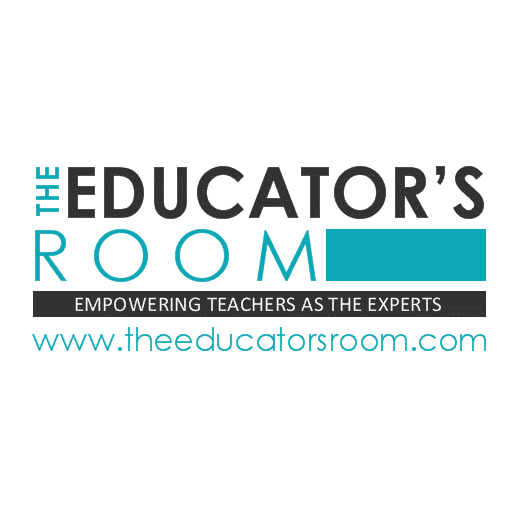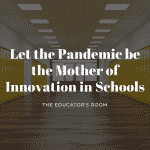As adults in a time of crisis, we turn to familiar sources. I find myself these days interested in the efforts of South Korea, in the singing balconies of Italy, and in the ways in which different nations have dealt with the virus. It helps me to interpret what is happening around me, and what best decisions I can make and should make for my family’s well being and my own. But it makes me wonder.
To what do our students turn?
A few months ago, as a Fulbright Teacher Fellow for Global Classrooms, I learned how a cell phone was made and how the enterprise itself involved a host of disciplines on a global scale. It was an educational epiphany that I took back to my classroom almost immediately, infusing my curriculum with a global perspective. Students began to see connections in ways I had never dreamed. They shared information with students from around the world in working groups on Zoom, and they read and researched as global citizens, not as children in an isolated community. When we went global, it was like I had lifted a restriction to my teaching that never should have been there.
And now, listening to them in our daily remote learning, I am so glad I did.
Consider:
*There are 272 million people worldwide living in a country in which they were not born.
*In a recent poll, 6 in 10 could not find Iraq on a map, less than 3 thought geography was important and only 14% considered a second language a valuable skill.
*US students are next to last in developed nations when it comes to global competency or current events and that doesn’t improve into the college level (Asia Society)
*At least 1 in 5 US jobs are tied to international trade and even most college grads are not gaining basic levels of how the world works internationally.
As a Fulbright scholar, I knew all that months ago–just as I knew that much of the world was working towards the Sustainable Development Goals established by the United Nations. These sixteen goals range from clean water to equitable justice the world over. Our nation was working alongside these goals until recently.
Today, I know more. I know that teaching with a global mindset is far more than a matter of financial success for my students or a feel-good contribution to our world—it’s become a requisite for my students whether in crisis or not.
What is global education? What are globally-minded citizens?
Let’s start with what it isn’t. Global education is not about assigning country reports, lemonade stands for starving children, or sharing pictures of a giraffe taken by a teacher while on vacation. That is not to say there is not a time and place for any of those.
But what is it then?
Global education began with comparative studies in the 1920s. Later, in the 1960s as civil rights began to spread the world over, global education became a way to view changing dynamics as a global phenomenon. The work of Dr. Martin Luther King Jr. and Nelson Mandela in South Africa did not occur in a vacuum but rather inspiration from Gandhi in India, among others. Dr. Martin Luther King Jr’s inspiration did not end with the US either. Global education is a way for us to understand core concepts, goals, and ideals, and how they affect all of us and then to act! Global education is a way for our students to share, to be heard, to build up our collective humanity. Countries like South Korea that embrace these global norms are discovering the benefits are economic as well as social.
Globally minded citizens, according to the Asia Society, are capable and empowered to do four core things.
First, global citizens investigate their world. Rather than creating separate lessons, teachers enrich their existing curriculum with global ideas and perspectives, allowing students to make discoveries beyond their communities. During a recent trip to a wildlife sanctuary, my students learned that water pollution is destroying the habitat of an endangered local bird. But they also learned that this pollution is affecting waterfowl in Colombia, Uganda, and Egypt. They saw the value in conservation science both personally and around the world.
Global education teaches students to recognize perspectives beyond their communities and communicate those ideas in authentic ways. During the same unit about water quality, several of my students met online with their global partners to share engineering ideas about how different communities were using technology to clean their local water supply. My students concluded that several of the strategies could work here and began writing opinion pieces to illustrate it for our school newspaper.
Most importantly, global education empowers students to take action. Globally minded students learn to see themselves as stakeholders, beneficiaries of decisions made around the world. A student in my class here in the US, partnering with friends in Colombia and Egypt, studied the recent wildfires in Australia. As they researched together, they began to discover that the fires in our state of California, and those in Australia bore patterns in causality. They then, together, began to learn of fires in Brazil and other parts of the world with similarities. With this new globally-minded understanding they began to see the causality of the climate change affecting these regions and their relationship to an increase in wilderness fire-related incidents the world over. Making pamphlets, they presented to their schools and families.
Global education matters now more than ever
While sheltering in place, our children are on the TV, on social media, and the internet. Lacking a basic understanding of our world beyond them, to what will they turn?
Teaching global competencies is no longer a choice to me, but a duty.
The COVID-19 pandemic did not stop at a border. Neither do civil rights, poverty, water, energy, and environmental concerns. Our students depend on us to give them the tools they will need to face challenges whether in a crisis or not. Those tools must now include a global understanding of how our world functions, past, and present.
Join me and my Teachers for Global Classrooms colleagues in using this time to reinvigorate your teaching with ideas that might be the most important we teach going forward.
For a list of places to begin, start here.
Thomas Courtney is the author of a blog on global competency and a Fulbright Hays Teacher for Global Classrooms Fellow. He has taught in the US, China, South Korea, East Africa and will be in Colombia soon, whenever soon is.




